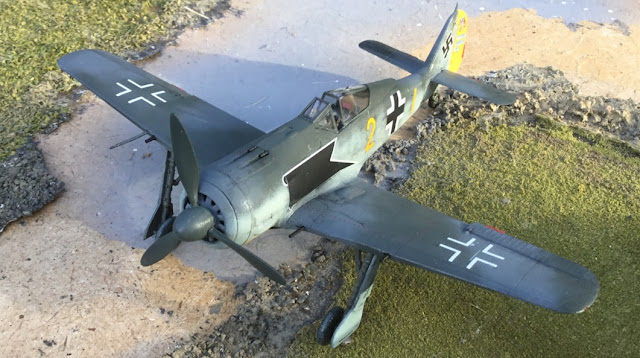Do a google search for "Eduard Bf 109 Gustav build review" and see how many of these kits have been built - not many by the looks of it! My first-look in-box review from July 2014 comes up second right behind hyperscale.com
...one whole year after starting one of the three I bought I'm just putting the final touches to my first one. Firstly, you have to say that it is an incredibly nice kit - the amazingly good surface detailing is especially impressive. The Eduard Profi-pack boxings are first-rate; everything you need from etch to masks is in the box and the build experience is thus extremely nice. Eduard's Gustav can really be made to look the part. Provided of course you don't stand it next to any other 48th scale Bf 109s. Aside from the 'over-scale' issues the other big problem in the kit though is the very poor undercarriage legs which are overly long and simply plug in and point down; you have to work hard to achieve a decent 'sit'..more of this build on my modelling blog here
1:48th scale Eduard Bf 109 G-6 finished in the markings of the Staffelkapitän 1./ JGr. 50, Oblt. Alfred Grislawski, late summer 1943, Wiesbaden-Erbenheim. Ex 9./ JG 52, Graf's 'Red Hunter' badge appears below the port cockpit side. Grislawski's garish rudder scoreboard featured a representation of the RK decorated with the pilot's initials and his score at the time of the award - '40'. In September 1943 the last three of the further 72 victory Balken were B-17s. Grislawski was credited with a B-17 from each of the forces on the Schweinfurt-Regensburg raid, 17 August 1943. He claimed his third B-17F on 6 September 1943, south-east of Stuttgart- see photo below. His rudder and its scoreboard is on display at the Speyer Technik museum. Grislawski accounted for some fourteen Viermots in his career in the defence of the Reich.
Below; here's a look at the contents of Eduard's Bf 109 G Royal Class boxing - wing and fuselage parts for four kits are in the box although only two cockpits are provided. There are separate fuselage halves for a G-2, while the box also allows the G-6 and G-14 to be built. The piece of genuine G-14 ( Lt. Hans-Helmut Linck III./JG 4 shot down and WIA 11 September 1944 ) comes mounted on a wooden stand. The Brassin in the box is for a set of Br. 21 rocket tubes. All in all a very fine package with the reservations expressed above.



















































